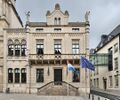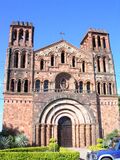Place:Lusophone
Lusophones (Portuguese: Lusófonos) are peoples that speak Portuguese as a native or as common second language and nations where Portuguese features prominently in society. Is a group of Portuguese-speaking nations that share cultural or historical ties with the Portugal, and which today maintain close political, diplomatic and military co-operation. Comprising an estimated 300 million people spread across 10 sovereign countries and territories, thus called Lusofonia or the Lusophone world (Portuguese: Mundo Lusófono), is the community of Portuguese-speaking (Lusophone) world; these include Angola, Brazil , Cape Verde, Galicia, Guinea Bissau, Equatorial Guinea, Macau, Mozambique, Portugal, São Tomé and Príncipe, East Timor, Uruguay, Cochin, Azores, Madeira, Goa, Daman and Diu, Singapore and Malacca to various degrees.
The history of the Lusophone world is intrinsically linked with the history of the Portuguese Empire, although the Portuguese diaspora, the Brazilian diaspora and the Cape Verdean diaspora communities have also played a role in spreading the Portuguese language and Lusophone culture. Portuguese-speaking nations cooperate in politics, culture and the economy through the Community of Portuguese Language Countries (CPLP).
Etymology
File:WIKITONGUES- Freddie speaking Portuguese.webmThe term Lusophone is a classical compound, wherein the combining form "Luso-" derives from the Latin term for an area roughly corresponding to modern Portugal, called Lusitania.[1] The suffix "-phone" derives from the Ancient Greek word φωνή (phōnē), meaning "voice".
History
This section does not cite any external source. HandWiki requires at least one external source. See citing external sources. (April 2023) (Learn how and when to remove this template message) |
Once the Portuguese mainland space had been established with the conquest of the Algarve, the last kings of the first dynasty dedicated themselves to organizing the national territory: they promoted settlement, agricultural exploitation, the creation of trade structures, the creation of defenses, not so much the south as east, &c. In this way, the Avis dynasty was able to engage in a new process of territorial expansion, which began in 1415 with the capture of Ceuta.
This was followed by the feat of the Discoveries, which involved the discovery of the archipelagos of Madeira and the Azores, the arrival in South America and various parts of Sub-Saharan Africa to Asia and the Pacific Ocean, such as Goa, Malacca, Macau and East Timor.
This long historical process has currently resulted in a cultural identity shared by eight countries, united by a shared past and by a language that, enriched in its diversity, is recognized as one. These countries - Angola, Brazil, Cape Verde, Guinea-Bissau, Mozambique, Portugal, São Tomé and Príncipe and Timor-Leste -, (in addition to the special administrative region of Macau) with their respective nuclei of emigrants, make the Portuguese language one of the most spoken languages in the world, constituting a community of more than two hundred and forty million people. Lusofonia can also be the platform from which the peoples who speak Portuguese today will be able to approach and expand the scope and action of the CPLP.
Language and ethnicities in Portuguese-speaking areas around the world
| Continent/region | Country/territory | Languages spoken[2] | Ethnic groups[3] | Image |
|---|---|---|---|---|
| Europe | Portuguese (official), Galician, Mirandese | Ancient civilizations: (Iberians, Celts, Greeks, Romans, Goths or Germans, Arabs, Jews or Sephardim, Phoenicians, Berbers and other African peoples, Guanches, Vikings, Gypsies and among others). | 
| |
| Catalan 38.1% (Official), Spanish, French and Portuguese 15%. | Spanish, French and Catalan. | 
| ||
| Galician, Spanish (official). Portuguese | Galicians, Spaniards, Portuguese | 
| ||
| Luxembourgish (official), German, French; Portuguese is spoken by 18% of the population | Ancient Civilizations (Celts or Gauls, Romans, Goths or Germans and among others) | 
| ||
| German, French, Italian, Romansh (Official); Portuguese | German, French, Italian, Romansh | 
| ||
| South America | Portuguese (Official). Spanish, Italian, German, Guaraní and other Amerindian languages of the Amazonia. | White 47.7% (Mainly of Portuguese, Italian, Spanish, Arab and German descent), Multiethnic 43.1% (Mainly mestiços and mulattos), Black 7.6%, Asian 1.1% (Mainly Japanese, Chinese and Korean), and Amerindian 0.4%. | 
| |
| Spanish (official), Portuguese other European and Amerindian languages | European Argentine (mostly Spanish and Italian descent, (including Arab) and Mestizo (mixed European and Amerindian ancestry) 97.2%, Amerindian 2.4%, Black 0.4%. (See: Argentinian people) |

| ||
| Paraguayan Guaraní (official), Spanish (official), Portuguese | Mestizo (mixed European and Amerindian) 95%, Other 5% | 
| ||
| Spanish (official), Uruguayan Portuguese | White (mostly from Spanish and Italian ancestries) 87.7%, Black 4.6%, Amerindian 2.4%, Yellow (East Asian descent), Other/unspecified 5.1% | 
| ||
| Spanish (official), Portuguese, numerous indigenous dialects | Mestizo (mixed European and Amerindian ancestry) 49,9%, White 43,6%, Black 3,5% and Amerindians 2,7% (See: Venezuelan people) |

| ||
| North America | English 57.2% and French 21.8% (Official). Other non-official languages 19.7%: Spanish, Portuguese 1-2%, Chinese, Vietnamese, Italian, German, Punjabi, Cree, Inuktitut, Ojibwa and Inuktitut. | 90% White (primarily of British and French descent), Mixed Race, African American, Native American, and Asian. | 
| |
| English 78.1%, Spanish 13.5%, other Indo-European 3.7%, Asian and Pacific Islander languages 3.6%, other 1.2% (2018 census), Portuguese 0.5% (Hawaiian is an official language in the state of Hawaii). | White 79.96%, Black 12.85%, Asian 4.43%, Amerindian and Alaska Native 0.97%, Native Hawaiian and other Pacific islanders 0.18%, two or more races 1.61% (July 2007 estimate) | 
| ||
| Caribbean Islands | Aruba, Bonaire and Curaçao (Constituent country in the |
Dutch, Papiamento (Portuguese creole), (official); English | Afro-Caribbean people, mestizos, Dutch | 
|
| Saint Barthélemy (Overseas collectivity of |
French (Official), Portuguese (it's spoken for 3000 people in the island) | French people | 
|
|
| Sub-Saharan Africa | Portuguese (official), umbundu, kimbundu, kikongo, chokwe language, Kituba and kwanyama | Blacks and mulattoes (mestizos - Africans and Portuguese). | 
| |
| Portuguese (official), Cape Verdean Creole | Blacks and mulattoes (mestizos - Africans and Portuguese). | 
| ||
| Portuguese (official), Guinea-Bissau Creole, Balanta, Fula, Mandjak, Mandinka and Papel | Blacks and mulattoes (mestizos - Africans and Portuguese). | 
| ||
| Spanish, French, Portuguese (official), Fang, Bubi, bioko, Fá d'Ambô, Balengue, Ibo and Kombe | Blacks: (Fangs 85.7%, Bubis 6.5%, Mdowes 3.6%, Annobon 1.6%, Bujebas 1.1% and others 1.4%) (1994 Census) and mulattos (mestizos - Africans and Spaniards). | 
| ||
| Portuguese (official), Swahili, Makhuwa, Sena, Ndau, Tswa-Ronga (Tsonga), Lomwe, Ekoti, Makonde, Chopi, Chuwabu, Ronga, Kimwani, Shona, Chichewa | Blacks and mulattoes (mestizos - Africans and Portuguese). | 
| ||
| Portuguese (official), Forro, Angolar and Principense. | Blacks and mulattoes (mestizos - Africans and Portuguese). | 
| ||
| Asia-Pacific | Goa ( |
Konkani (official), English, Marathi, Portuguese | Konkani (Indian), Luso-Indian | 
|
| Batticaloa ( |
Sinhala language and Tamil (official). Sri Lankan Portuguese creole | Burgher people | 
| |
| Chinese and Portuguese (Official). | Chinese: Han, Cantonese and Hakka, Japanese and Filipino. | 
| ||
| Malay and English (Official). Kristang language, a creole of Portuguese (Minority), Bahasa and Chinese. | About 2,000 Cristang (Portuguese Creoles) speakers | 
| ||
| Japanese (Official), Portuguese (spoken by 300.000 people) | Japanese people | 
| ||
| Tetun and Portuguese (Official). Bahasa Indonesia, Malay, English. | Austronesian or Malays, mestizos (European-Malay) 3.6% and European Creoles of Portuguese origin respectively. | 
|
Other areas where Portuguese is also spoken
| Continent/region | Country/territory | Languages spoken[2] | Ethnic groups[3] |
|---|---|---|---|
| Macaronesia | Portuguese (official) | Portuguese | |
| Portuguese (official) | Portuguese | ||
| Africa | Casamance ( |
French and Wolof (Official); Guinea-Bissau Creole | Blacks and mulattoes (mestizos - Africans and French). |
| Asia | Chinese and English (Official). Portuguese | 92.0% Han Chinese, 2.5% Filipino, 2.1% Indonesian ,0.8% White ,0.5% Indian, 0.3% Nepalese, 1.6% Others | |
| Flores ( |
Larantuka and Indonesian (Official). Portuguese (spoken in the city of Larantuka for historical reasons) | Austronesian or Malays | |
| English and Malay, Mandarin, Tamil (Official). Kristang language | About 2,000 Cristang (Portuguese Creoles) speakers |
Culture
This section does not cite any external source. HandWiki requires at least one external source. See citing external sources. (April 2023) (Learn how and when to remove this template message) |
The Camões Prize is awarded to Lusophone writers, whereas the Prémios da Lusofonia recognizes Lusophone who distinguished themselves by work and career in the most diverse activities and areas they exercise, from music, literature, citizenship, visual arts, social communication, passing through theater and cinema, education, fashion and styling, and the Prémios Lusófonos da Criatividade award, honor and recognize the advertising and communication markets in Portuguese-speaking countries.
Literature
Portuguese-language literature and folklore is very rich and is influenced by a variety of countries. There are thousands of writers from many places, and dating from the Middle Ages to the present. Some of the most recognized writers are Luís de Camões (Portugal), Miguel Torga (Portugal), Vergílio Ferreira (Portugal), Luís Cardoso (East Timor), Rachel de Queiroz (Brazil), Jorge Amado (Brazil), Lygia Fagundes Telles (Brazil), Pepetela (Angola), José Luandino Vieira (Angola), Germano Almeida (Cape Verde), Paulina Chiziane (Mozambique), Ferreira Gullar (Brazil), Mia Couto (Mozambique), Ondjaki (Angola), Conceição Lima (São Tomé and Príncipe), Manuel Alegre (Portugal), Dalton Trevisan (Brazil), Graciliano Ramos (Brazil), Patrícia Godinho Gomes (Guinea-Bissau), Helder Proença (Guinea-Bissau), Caetano da Costa Alegre (São Tomé and Príncipe), Ruth Rocha (Brazil), Arménio Vieira (Cape Verde), João Ubaldo Ribeiro (Brazil), Deolinda da Conceição (Macau), Henrique de Senna Fernandes (Macau), José Saramago (Portugal), Ariano Suassuna (Brazil), Sophia de Mello Breyner Andresen (Portugal), Alda Neves da Graça do Espírito Santo (São Tomé and Príncipe), Vimala Devi (Goa), Eduardo Galeano (Uruguay), Almeida Maia (Azores), Gabriel de Almeida (Azores) and Maria Ângela Carrascalão (East Timor).
Sports
In the majority of the Lusophone countries, association football is the most popular sport. The men's national team of Uruguay and Brazil have won the FIFA World Cup a total 2 and 5 times, respectively. Football is the most prominent sport mainly in Brazil (which is known as the "country of football"), as its national team is responsible for the most World Cup victories: 1958, 1962, 1970, 1994 and 2002.
Several Lusophone sportspeople have been successful worldwide, such as Neymar, Cristiano Ronaldo, Luís Lopes, Hélder Costa, Ronaldinho Gaúcho , Cafu (association football), Diogo Ventura, Tiago Splitter, Leonel Paulo (basketball), João Almeida, André Almeida, (cycling), Daniel Silva, Adilson da Silva, (golf), Diego Pérez, Fernando Meligeni, Frederico Marques, (tennis).
Music
Folk and popular dance and music also varies greatly among Lusophone. For example, the music of Portugal is very different from that of Brazil and the rest of the Portuguese-speaking countries, although there is a high degree of exchange between all continents. Portugal is known for its musical tradition, mainly fado and its derivatives. This being the musical genre that, by pure convention, most characterizes the Portuguese spirit, associated with its history and cultural roots, mainly through the influence of Amália Rodrigues. However, in the 1990s the term música pimba was coined, although the genre already existed, based on a song by Emanuel: light music with expressions of double meaning, with Quim Barreiros being one of the leading figures.
On the other side of the ocean, Brazil is also home to a wide variety of music, with samba being the most famous and commercially sold genre outside the country. Although Brazil also has several other musical rhythms such as Sertanejo music, Brazilian rock, samba reggae, Baião, Forró, Lambada, Electronic Music, Música popular brasileira (or MPB), regionalists, among many others. After pioneers such as Carmen Miranda, many other names gave Brazilian popular music international exposure, and today it is accepted in many parts of the world, and despite making use of a plurality of global references, it maintains a distinctive character that is quickly recognized and appreciated in other countries. Meanwhile, in Africa, there is Angolan music where the capital Luanda is the cradle of different styles such as Kuduro, Adoço (mixture of kuduro and house), merengue, kazukuta, kilapanda and Semba. On the island off the coast of Luanda, rivet was born, a style based on the accordion and the harmonica. There are those who argue that fado itself originates in Angola. Mozambican music, on the other hand, has Bantu characteristics and Arab influence, mainly in the northern zone and, as such, is usually created to accompany social ceremonies, mainly in the form of dance, being the Marrabenta being its most popular style. In Cape Verde, the Batuque, Colá, Coladeira, Funaná, Morna and Tabanka are your main musical styles, while the music of Guinea-Bissau is generally associated with the polyrhythmic musical genre gumbe, the country's main genre of musical export. Other popular musical genres are la tina and tenga.
The best-known rhythms in São Tomé and Príncipe are ússua and socopé, while on the island of Príncipe the dexa rhythm is heard. Portuguese ballroom music may have had an influence on the development of these rhythms and associated dances. The music show called tchiloli has a dramatic staging and narrative. The dance-congo is also a combination of music, dance and theater; the music of Macau is a mixture of Cantonese and Portuguese music. And finally, we have East Timorese music, which contains four well-defined genres: tebe, tebedai, dansa and cansaun. All are based on oral tradition and have been passed down from generation to generation.
See also
- Geographical distribution of Portuguese
- Geographical distribution of Portuguese speakers
- Lusitanic
- Lusophobia
- Lusophone literature
- Angolan literature
- Brazilian literature
- Latin American literature
- Portuguese literature
- Lusofonia Games
- Lusophone music
- Lusophone name
- Indo-Portuguese
References
- ↑ "lusophone, adj". OED Online. Oxford University Press. September 2014. http://www.oed.com/view/Entry/241457?redirectedFrom=lusophone#eid.
- ↑ 2.0 2.1 "The World Factbook: Languages". CIA.gov. https://www.cia.gov/library/publications/the-world-factbook/docs/notesanddefs.html#2098.[|permanent dead link|dead link}}]
- ↑ 3.0 3.1 "The World Factbook: Ethnicity Notes". CIA.gov. https://www.cia.gov/library/publications/the-world-factbook/docs/notesanddefs.html#2075.Lua error: Internal error: The interpreter exited with status 1.
Lua error: Internal error: The interpreter exited with status 1.
External links
- Words Without Borders explores Lusophone literature in translation
- Flavours of Lusophony Lua error: Internal error: The interpreter exited with status 1.


